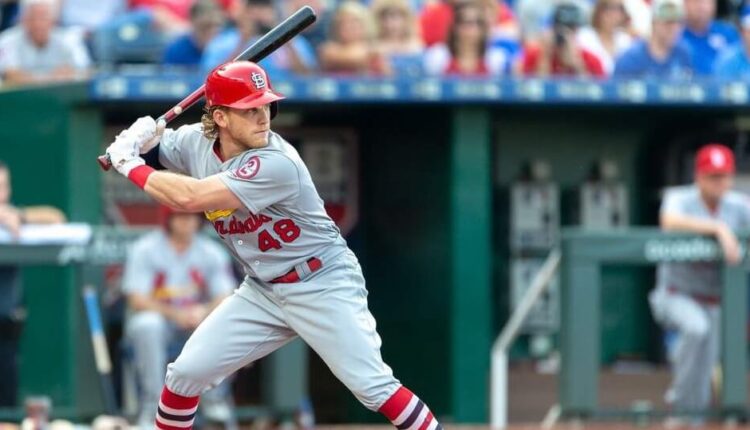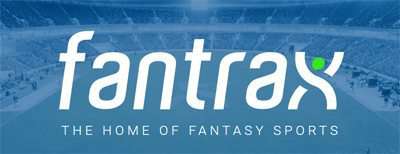As we wind down to the final two months plus of the season, we peruse the leaderboards to see what’s going on. In this installment of the buy or sell series, we analyze one ace pitcher with a deeper league outfielder that improved his plate discipline. Drafted as an ace, Aaron Nola hasn’t produced like many of us expected. I noticed his struggles in the shadow zone that we’ll discuss later. Someone like Harrison Bader doesn’t pop off the page but provides value with the power and speed. Given Bader’s defensive ability and improved plate discipline, it’s helping keep his real-life and fantasy production afloat. Let’s look at the surface and underlying metrics to help understand whether to buy or sell their current production.
What?! Your fantasy baseball league is not using Fantrax? Inconceivable! Check out everything Fantrax has to offer, and I’m sure you’ll come around to our way of thinking.
Buy or Sell – Aaron Nola’s Struggles & Harrison Bader’s Plate Discipline
Aaron Nola (SP – PHI)
On the surface, Aaron Nola isn’t the ace many hoped for this season. Away from home, Nola holds a 5.56 ERA and 1.29 WHIP with a 6.7% walk rate and 25.5% strikeout rate in 69 2/3 innings pitched. Nola pitched much better at home with a 2.97 ERA and 0.96 WHIP with a 3.3% walk rate and 34.2% strikeout rate in 60 2/3 innings. That seems like a similar trend from his career 2.98 ERA at home compared to a 4.25 ERA away, but just a significant gap in ERA in 2021.
Nola’s ratios should regress slightly given his 70.9% LOB% compared to a career rate of 74.9%. The same applies with his BABIP allowed at .308 compared to a career .294 BABIP. Though not far off from Nola’s career rates, it could slightly improve.
One other notable difference involves Nola’s lower ground ball rate at 40.7% compared to a career rate near just under 50% at 49.2%. It looks like he traded the higher ground ball rate and gave up a career-high 39.2% flyball rate, almost 9% above his career average. Nola typically limits the walks. That’s the case once again with a 5.2% walk rate – a career-low up to this point. Nola’s 29.4% strikeout rate sits slightly above his career norms yet close to the previous season outside of 2020. So far, it seems like Nola serves as a typical buy-low candidate rather than sell low at starting pitcher, given similar surface stats.
Nola’s Pitch Mix & Results
The first item I wanted to look at involved what has caused the increase in the flyball rate. On the surface, Aaron Nola’s four-seamer allows a 51.4% flyball rate compared to a career rate of 38.8%. Nola typically relies on the curveball, sinker, and changeup to elicit ground balls, but the curveball and sinker haven’t provided the same level of ground balls.
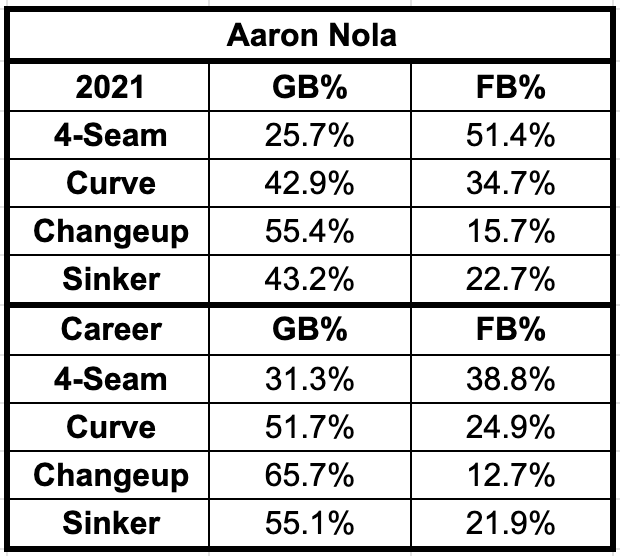
Most plate discipline data look similar, with a higher swinging-strike rate on the four-seamer at 9.2% with better swinging-strike rates on the curveball and changeup compared to 2019. Nola’s 2020 plate discipline data by pitch looks like the outlier compared to 2019, the current season, and his career rates.
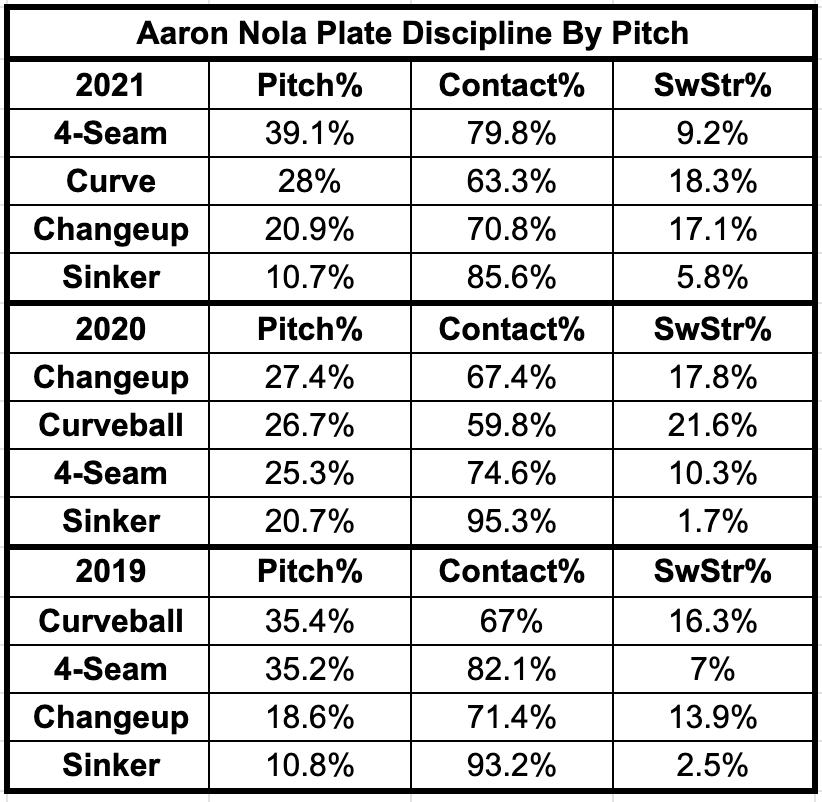
Overall, it seems like Nola ran into some fortune in 2020 and struggling this year, particularly with the four-seamer giving up more fly balls and the highest xSLG of Nola’s career. In 2021, Nola’s four-seamer resulted in a .553 xSLG compared to a .433 xSLG in 2020 no higher than .484 from 2017-2019.
Struggles Shadow Zone
As I perused through the Baseball Savant data, I noticed Aaron Nola’s struggles in the shadow zone. Nola also struggled in the heart of the zone. Per this resource via Baseball Savant from the great Tango Tiger, “the shadow zone is the area that straddles the strike zone on both sides: called pitches here are basically 50/50 ball/strikes.” It made me want to look at Nola’s called strike plus whiff percentage (CSW%), and it’s down to 30.7% this season compared to 31.5% to 32.6% the past three seasons.
Nola typically relies on control and command, and his struggles in the shadow zone matter. Baseball Savant assigns a Run-Value to each zone, and we notice a career-low (not good) in Run-Values in the heart and shadow areas of the zone in 2021. Right here, we have somewhat of a tipping point on whether to buy or sell Nola’s struggles in 2021.
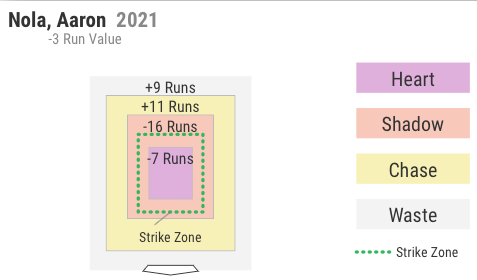
Since Nola throws 68% of his pitches in the heart and shadow zones, it’s a bit concerning when you compare previous seasons.
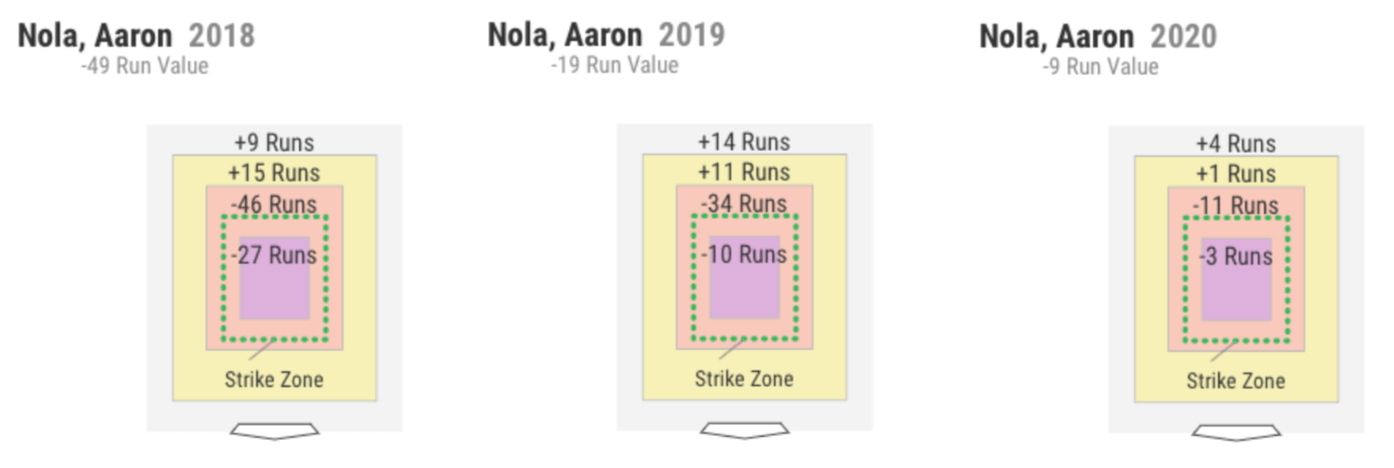
So why do these Run-Value changes matter? Per Baseball Savant, every pitch receives a number or Run-Value based on the outcomes. You can find more information via Tango Tiger on the Swing/Take information. For pitchers, a higher negative number is better, so Nola’s struggles in the shadow zone look like another contributing factor to his struggles in 2021. Even in the heart of the zone, we notice a similar downward trend in 2021.
Should We Buy or Sell Aaron Nola?
At this point, I think we’ve found reasons for Aaron Nola’s struggles in 2021. A pitcher that relies heavily on command and control drafted as an ace should fare better for the Phillies and fantasy squads. Nola’s ERA estimators project him to have a lower ERA, which indicates there is a good chance he improves ratio-wise moving forward. He has a 3.43 FIP, 3.37 xFIP, and 3.56 xERA, all of which would sit much better with us instead of his current 4.35 ERA.
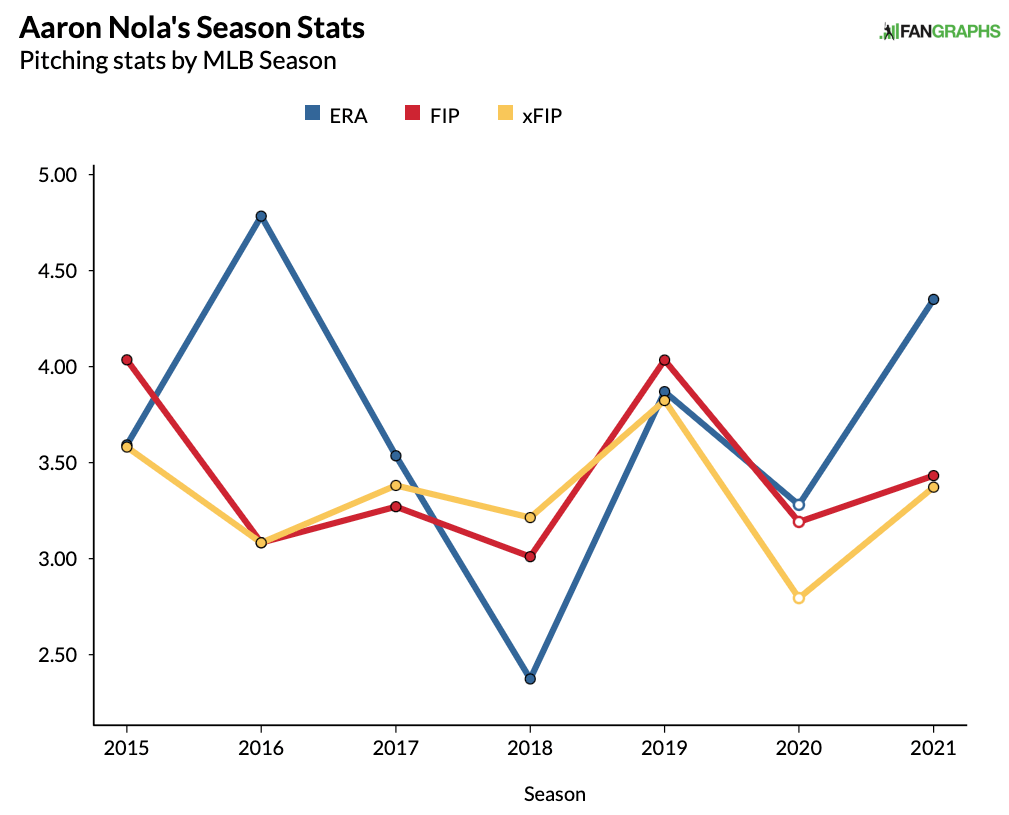
The increased fly ball rate is worrisome since the Phillies’ home ballpark rates as above-average in home run park factors per EV Analytics. However, Nola’s 14.1% HR/FB% falls in line with his career norms and looks better than 2019 (17.4%) and 2020 (19.6%). Nola’s four-seamer, in particular, has resulted in a high fly ball rate and a career-worst xSLG against in the Statcast era. However, probably the most concerning involves the struggles in the shadow zone, given the success in previous seasons. Maybe it’s the new baseball or an outlier season, but Nola’s track record of success would lead me to buy more than selling Nola’s 2021 season results.
Harrison Bader (OF – STL)
Maybe it’s a personal bias, but players like Harrison Bader, who has the defensive ability yet comes with offensive flaws, usually don’t end up on my draft list. However, Bader has shown some drastic improvements in plate discipline that warrant a deeper dive.
In 208 plate appearances, Bader has nine home runs, 22 runs, 28 RBI, and six stolen bases with a .274 batting average. Bader’s 18.8% strikeout rate is the lowest of his career through five different major league seasons. Although Bader’s 8.7% walk rate dropped from 2019 and 2020 when it typically hovered around 10-11%, we can appreciate that profile with the drop in strikeout rate.
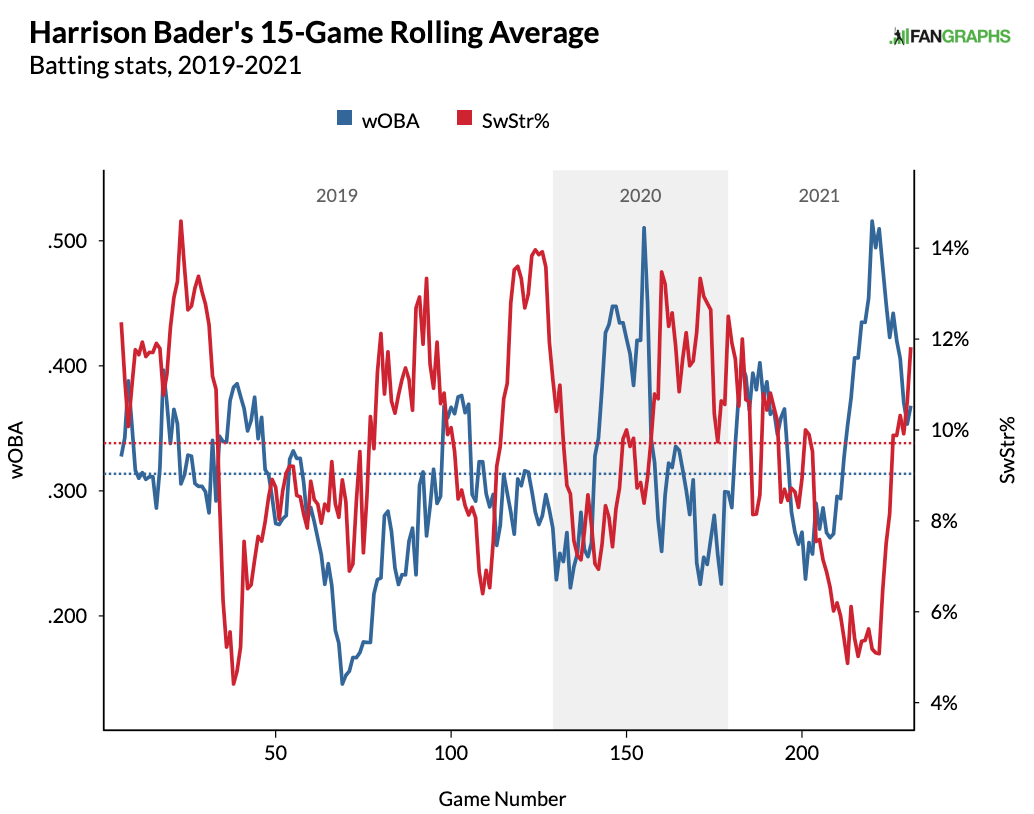
Unsurprisingly, Bader lowered his swinging-strike rate to 8.6%, down from over 10% in previous seasons. His higher 80.2% contact rate stands out, but it’s coming with a career-high 69% O-Contact%, meaning he is making much more contact outside the zone. It looks like Bader is using a more aggressive approach, although the swing rate of 44.1% remains similar to his career rate while also swinging and missing less often.
Bader’s Quality of Contact
After a career-best 11.9% barrel rate in 2020 with only four home runs in 125 plate appearances, Harrison Bader’s barrel rate dropped to 6%, below his career norm of 8.4%. Bader’s 90.4 mph exit velocity on FB/LD sits at No. 285 near Leury García plus a struggling (yet improving) Jarred Kelenic amongst hitters with at least 100 batted ball events. However, Bader’s maximum exit velocity of 111.5 mph (81st-percentile) is near his 2019 numbers when he hit 12 home runs in 406 plate appearances. Even Bader’s .340 wOBA rates as a career-best, which isn’t surprising given the improved plate discipline and on-base skills.
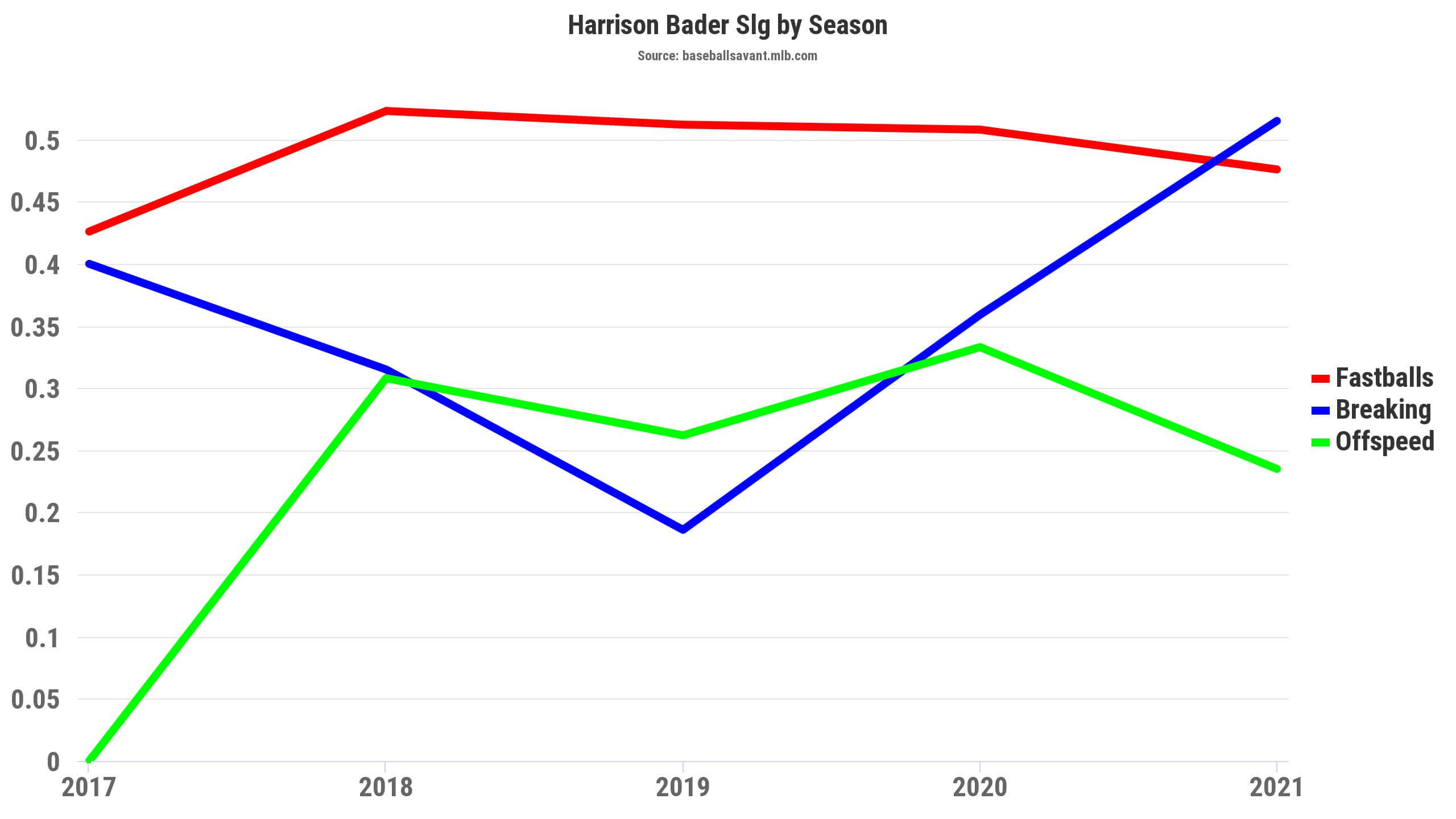
Although Bader’s batted ball data doesn’t pop off the page, it’s worth noting that he has potential above-average raw power. Historically Bader struggled against breaking pitches with a .359 SLG in 2020, .186 SLG in 2019, and .320 SLG in 2018. However, Bader boasts a .515 SLG against breaking pitches in 2021. Bader’s .392 xSLG against breaking pitches look a bit concerning, so maybe that dips down. He still struggles a bit with offspeed stuff while hitting decently against fastballs. An improvement against breaking pitches looks like it’s helping Bader’s offensive production.
Should We Buy or Sell Harrison Bader?
The BAT X projections have Harrison Bader with eight home runs, four stolen bases, and a .243 batting average for the rest of the season. That tells us, the projection system expects Bader to continue the power and speed, but the batting average may dip. I would guess that the projection systems haven’t fully adjusted to Bader’s current season’s results and skill changes.
Outside of potentially finishing with 17-18 home runs and about ten stolen bases, Bader won’t provide many other counting stats since he typically bats in the bottom third of the lineup. Bader feels like he would need to compile a bit more runs and RBI to provide more value. But that said, 15-20 home runs with double-digit stolen bases hold value almost like an Andrew Benintendi light type of player.
Thanks for checking out this week’s article. Be sure to check out Eric Cross’s updated Top Fantasy Baseball Prospects.
Fantrax was one of the fastest-growing fantasy sites of 2020, and we’re not stopping now. With multi-team trades, designated commissioner/league managers, and drag/drop easy click methods, Fantrax is sure to excite the serious fantasy sports fan – sign up now for a free year at Fantrax.com.

